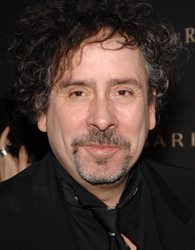Tim Burton is a maverick auteur in a world where filmmakers are often relegated to pleasing Hollywood studios and producers. But his quirky and macabre filmmaking style in films such as “Beetlejuice” and “Edward Scissorhands” has found an audience and earned him continued success.
Tim Burton’s Early Days
Timothy William Burton was born on August 25, 1958, in Burbank, California. As a child, he enjoyed watching horror movies and reading Edgar Allan Poe. “Such early influences no doubt helped to form the deliciously ghoulish and artfully warped sensibility of a director who was to become known for his forays into the bizarre outer regions of mainstream celluloid,” writes the All Movie Guide.
Burton won a scholarship to California Institute of the Arts and became an animator at Disney upon graduation. Of his time at the studio, Burton says, “I was just not Disney material. I could just not draw cute foxes for the life of me.”
Sources in this Story
- All Movie Guide: Tim Burton
- New York Times Magazine: Tim Burton, Batman and the Joker
- The Star-Ledger (Newark, N.J.): Johnny Depp and Tim Burton’s partnership through the years
- Museum of Modern Art: Crude Elegance: Stop-motion Animation and Tim Burton
- Biography.com: Tim Burton Biography
- Museum of Modern Art: Exhibitions 2009: Tim Burton
- The Daily Telegraph: Burton and Bonham Carter: a match made in Wonderland
- BBC America: Helena Bonham Carter Opens Up About Split with Tim Burton
Burton’s Films
Burton made two animated shorts during his time at Disney: “Vincent,” an homage to Vincent Price featuring the voice of Price himself, and “Frankenweenie,” a take-off on “Frankenstein.” Though Disney refused to release “Frankenweenie,” it impressed Paul Reubens, who hired Burton to direct “Pee-Wee’s Big Adventure” (1985).
“Pee-Wee,” shot like a live-action cartoon, was a box office smash that earned Burton a reputation for originality. His next film, 1988’s “Beetlejuice,” combined comedy, fantasy and horror, a formula that Burton would use throughout his career.
Burton’s “first two features, both resounding hits, are the work of a visionary artist; they look like no other movies ever made,” wrote Joe Morgenstern wrote in New York Times Magazine. His success gave him the opportunity to direct the big-budget action film “Batman” (1989) and its sequel, “Batman Returns” (1995).
His 1990 film “Edward Scissorhands” featured Price in his last career role and starred Johnny Depp, who would appear in many other Burton films. “Alternately frightening, funny, and touching, Edward Scissorhands proved that Burton could inject humanity and audience empathy into an otherwise unbelievable yarn,” says All Movie Guide.
Burton returned to stop-action animation, a technique he employed in “Vincent,” in the 1993 film “The Nightmare Before Christmas.” “Its success proved that audiences would still respond to this age-old medium even in the face of new and wondrous computer-animated films,” writes Jenny He for the Museum of Modern Art. Burton would also use the animation method in “James and the Giant Peach” (1996) and “Corpse Bride” (2005).
Burton’s later career has included many adaptations and remakes of beloved books, films and musicals, including “Planet of the Apes” (2001), “Charlie and the Chocolate Factory” (2005), “Sweeney Todd” (2007) and “Alice in Wonderland” (2010).
In addition to his filmmaking, Burton also enjoys painting and sketching. The Museum of Modern Art in New York held a retrospective of his artwork in 2009-10.
CNN features clips from nine of Burton’s films, exhibiting his distinct visual flair.
The Man and His Work
- “The Nightmare Before Christmas”
- “Edward Scissorhands”
- “Ed Wood”
- “Sweeney Todd: The Demon Barber of Fleet Street”
The Rest of the Story
Burton married actress Lisa Marie in 1992, though they divorced in 2001. He soon began a relationship with actress Helena Bonham Carter as they filmed “Planet of the Apes.” Bonham Carter, often referred to as Burton’s “muse,” starred in all of Burton’s films since their relationship began. They lived with their two children in separate homes connected by a hallway. The pair separated in 2014.
Interviews With Tim Burton
- Interviewed by the Museum of Modern Art, 2009 (Click “About Tim Burton”)
- Interviewed by Charlie Rose, November 15, 1999
- Interviewed by Danny Elfman for Interview Magazine, July 2009











